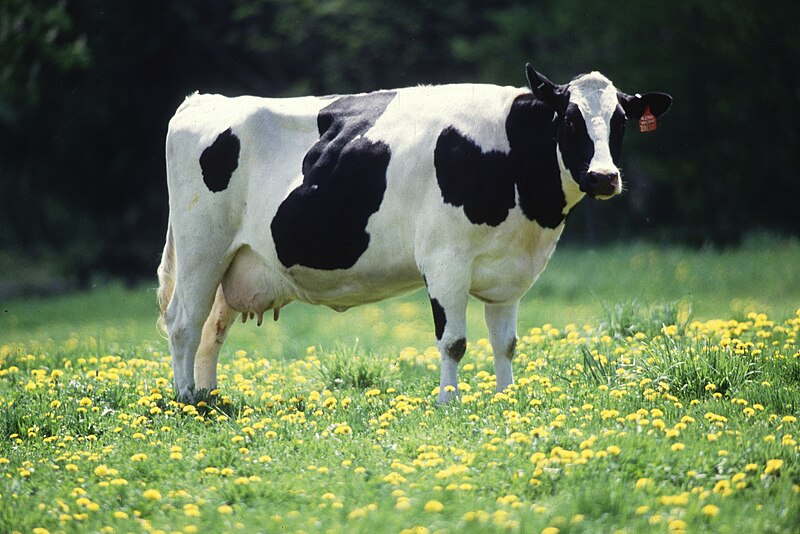File:Cow female black white.jpg

Saizi ya chakuona ichi: 800 × 534 pixels. Mu misani inyake: 320 × 214 pixels | 640 × 427 pixels | 1,024 × 684 pixels | 1,280 × 855 pixels | 2,700 × 1,803 pixels.
Chinthu cha kwenekuko (2,700 × 1,803 pixels, file size: 887 KB, MIME type: image/jpeg)
Mbili ya chinthu
Dofyani pa siku/nyengo kuti muone umo vikaonekela pa nyengo iyo.
| Siku/Nyengo | Kachithuzi | Vipimo | Mgwiliski | Ganizo | |
|---|---|---|---|---|---|
| sono | 03:31, 29 Ogasiti 2023 |  | 2,700 × 1,803 (887 KB) | ReichLover1997 | Reverted to version as of 21:09, 24 May 2006 (UTC) |
| 00:42, 1 Sekutembala 2018 |  | 2,190 × 1,680 (725 KB) | Hohum | Cropped, colour adjust | |
| 21:09, 24 Meyi 2006 |  | 2,700 × 1,803 (887 KB) | Siebrand | {{Information| |Description= {{nl|Een koe}} {{en|Because much of the cost of a cow is the feed and labor needed to maintain her, fewer but higher yielding cows mean lower priced milk. Dairy herd improvement ultimately benefits consumers. That's why it's j |
Magwiliskilo ntchito
Palije majani agho ghogwiliska chinthu ichi.
Umo chinthu chagwiliskikila ntchito
Ma wiki ghanyake agho ghakugwiliska ichi:
- Magwiliskilo pa ace.wikipedia.org
- Magwiliskilo pa ang.wikipedia.org
- Magwiliskilo pa an.wikipedia.org
- Magwiliskilo pa ar.wikipedia.org
- Magwiliskilo pa ast.wikipedia.org
- Magwiliskilo pa ast.wiktionary.org
- Magwiliskilo pa az.wiktionary.org
- Magwiliskilo pa ba.wikibooks.org
- Magwiliskilo pa be.wikipedia.org
- Magwiliskilo pa bg.wikipedia.org
- Magwiliskilo pa bjn.wikipedia.org
- Magwiliskilo pa bn.wikipedia.org
- Magwiliskilo pa bn.wikibooks.org
- Magwiliskilo pa bs.wiktionary.org
- Magwiliskilo pa ca.wikipedia.org
- Magwiliskilo pa ca.wikibooks.org
- Magwiliskilo pa ca.wikiquote.org
- Magwiliskilo pa ca.wiktionary.org
- Magwiliskilo pa ceb.wikipedia.org
- Magwiliskilo pa chr.wikipedia.org
- Magwiliskilo pa ckb.wikipedia.org
- Magwiliskilo pa csb.wiktionary.org
- Magwiliskilo pa cy.wikipedia.org
- Magwiliskilo pa dag.wikipedia.org
- Magwiliskilo pa da.wikipedia.org
- Magwiliskilo pa da.wiktionary.org
- Magwiliskilo pa de.wikipedia.org
- Magwiliskilo pa de.wiktionary.org
Wonani magwiliskilo ghanandi ghapa charu gha chinthu ichi.